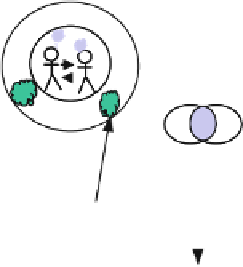Information Technology Reference
In-Depth Information
communications are structured within teams and to recommend how CSCW (com-
puter supported collaborative work) technologies might be adapted to improve
teamworking. Although RE is recognised to be a multidisciplinary process which
draws upon psychology, sociology, anthropology and linguistics, the role of linguis-
tics has been limited to parsing and understanding requirements in natural language
ented discourse theories of language have received less attention. In this chapter a
discourse theory of language, common ground [
5]
, is used to motivate a method
engineering design for collaborative RE as well as to evaluate the contributions that
different representations might make to enhancing mutual understanding with RE
teams.
2 Common Ground
The common ground theory or Clark's linguistic theory of discourse [
5]
describes
the process by which mutual understanding is achieved though the process structure
of human-human discourse. Briefly, Clark's theory of discourse explains how mean-
ing is constructed by conversation and action which progresses towards a mutually
agreed goal, the action ladder and project in Clark's terms. The main tenets of the
theory that concern RE are summarised in Fig.
1.
prior
knowledge
prior
knowledge
Conversations
have tracks
and layers
of meaning
side topic
surface intent
CG is generated
from
main topic
Conversation
exchanges
metaphors,
irony, fiction,
deep meaning
meta-dialogue
manages
conversation
B
B
B
A
A
A
Arena: place
and time
build mutual
understanding
-common ground
Setting: culture
and norms
progress towards
an agreed goal
Fig. 1
Summary of common ground concepts

























Search WWH ::

Custom Search